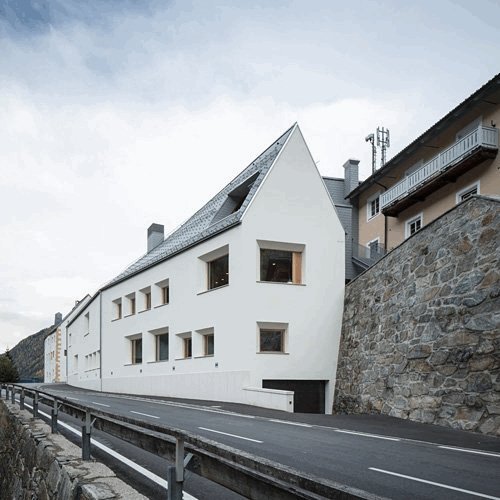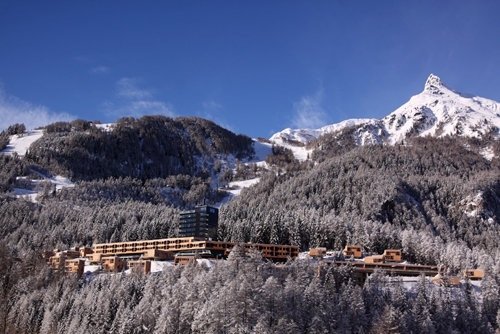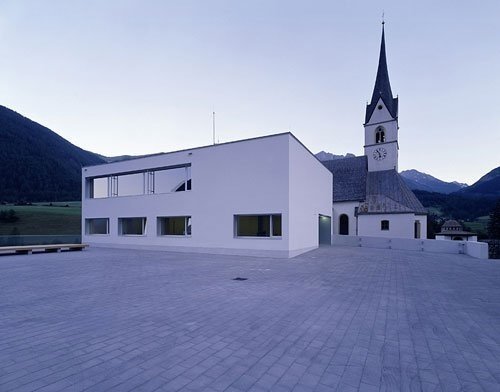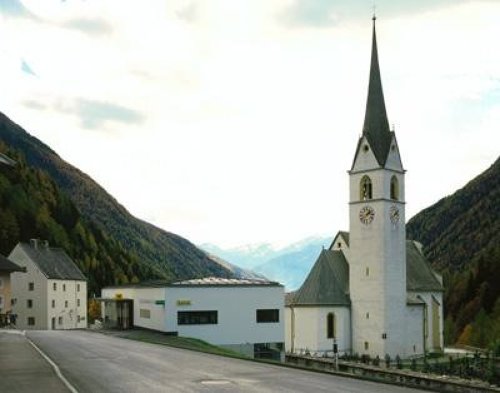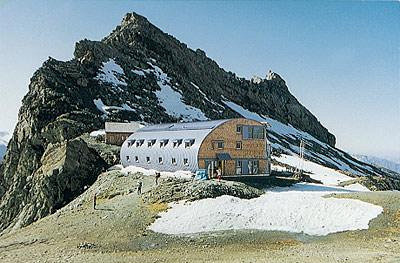Cultural Center Kals
Architecture: Schneider & Lengauer (2012-2013) Builder-owner: Gemeinde Kals TIP: Events such as concerts or theater performances by the Volksbühne Kals regularly take place here.
In order to give space to the active club and cultural life, the community of Kals decided on constructing a new event center with a hall that seats over 300 people. Schneider and Lengauer realized an elongated building which follows the course of the road, is docked onto the old Ködnitzhof inn, and, with its steep saddle roof and the precisely placed openings, makes reference to the rectory.


